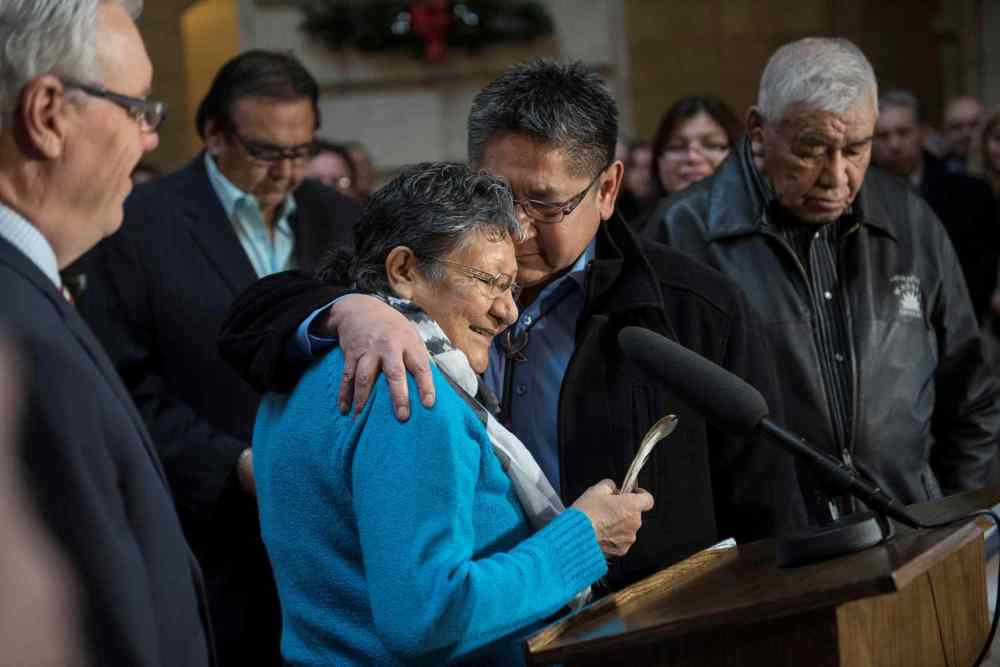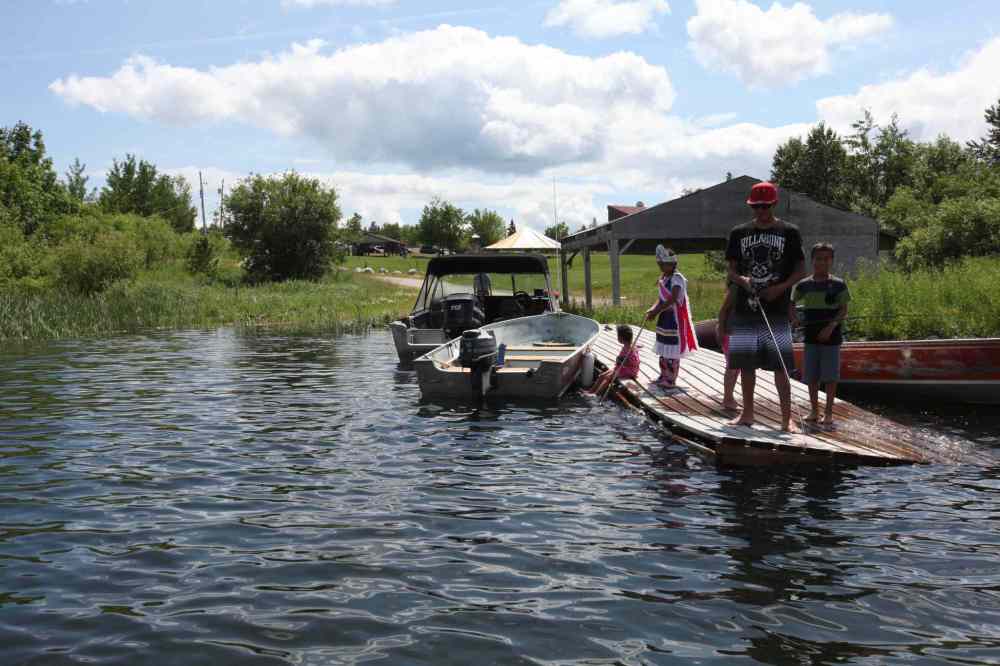Governments finalize agreement to build road to Shoal Lake 40
Advertisement
Read this article for free:
or
Already have an account? Log in here »
To continue reading, please subscribe:
Monthly Digital Subscription
$1 per week for 24 weeks*
- Enjoy unlimited reading on winnipegfreepress.com
- Read the E-Edition, our digital replica newspaper
- Access News Break, our award-winning app
- Play interactive puzzles
*Billed as $4.00 plus GST every four weeks. After 24 weeks, price increases to the regular rate of $19.00 plus GST every four weeks. Offer available to new and qualified returning subscribers only. Cancel any time.
Monthly Digital Subscription
$4.75/week*
- Enjoy unlimited reading on winnipegfreepress.com
- Read the E-Edition, our digital replica newspaper
- Access News Break, our award-winning app
- Play interactive puzzles
*Billed as $19 plus GST every four weeks. Cancel any time.
To continue reading, please subscribe:
Add Winnipeg Free Press access to your Brandon Sun subscription for only
$1 for the first 4 weeks*
*$1 will be added to your next bill. After your 4 weeks access is complete your rate will increase by $0.00 a X percent off the regular rate.
Read unlimited articles for free today:
or
Already have an account? Log in here »
Hey there, time traveller!
This article was published 17/12/2015 (3579 days ago), so information in it may no longer be current.
The sound of drumming reverberated around the Grand Staircase within the Manitoba Legislative Building as all three levels of government agreed to end the century-long isolation of Shoal Lake 40 First Nation.
Ottawa, Manitoba and Winnipeg formalized their commitment on Thursday to build an all-weather road to the northwestern Ontario Anishinaabe community that was cut off from the mainland by the construction of the Winnipeg Aqueduct.
Shoal Lake 40 sits along Indian Bay, which has served as the source of Winnipeg’s drinking water since the aqueduct was completed in 1919.

In 1917, as part of aqueduct construction project, a causeway was built to keep tannic, relatively muddy water from the Falcon River out of Indian Bay and away from the aqueduct intake pipe. Crews also cut a channel across Shoal Lake 40’s peninsula to carry Falcon River outflows into Snowshoe Bay, a neighbouring body of water to the south.
Since then, the First Nation has been an artificial island. Residents have had to rely on ferries and ice roads to reach the mainland, a journey that’s proven treacherous and sometimes deadly during the spring and fall.
A boil-water advisory over the past two decades – and the absence of a water-treatment plant on the artificial island alongside Winnipeg’s water source – have come to illustrate the disparity in quality of life between indigenous and non-indigenous Canadians.
The construction of a road that will make it safer to travel in and out of Shoal Lake 40, less expensive to build a water-treatment plant at the community and improve its economic prospects was framed on Thursday as both a symbolic gesture of reconciliation and a practical solution to nearly a century of isolation.
“I never thought I’d live to see this, today,” said lifelong Shoal Lake 40 resident Ann Redsky, speaking at the Legislative Building after all three levels of government pledged to build a 23.4 kilometre road that will connect her community to the Trans-Canada Highway, west of Falcon Lake.
Redsky said she’s been wary of making the crossing between her island and the mainland since she was thrown from a motorboat and nearly drowned in the late 1990s.
“I got caught between two waves and got flipped out of there. I went into the water. My rainsuit filled up with water and I was fighting to stay on top,” she recalled. “Everybody has a story. Every fall and spring is a dangerous time.”
Shoal Lake 40 Chief Erwin Redsky said now is not the time to dwell on past mistakes, but honour the memory of people who died making the crossing or left his community to seek better economic opportunities elsewhere.
The chief praised activists for promoting the need to build an all-weather road and thanked Winnipeggers for supporting it.
“This is so long overdue. In order for my community to get here today, they had to risk their lives, travel through ice,” he said. “It’s never safe.”
The road has a projected pricetag of $30 million, although that figure may change once a design is completed in 2016. The Selinger government plans to use the East Side Road Authority to oversee the construction.

The opposition Progressive Conservatives have also expressed support for the road, though leader Brian Pallister has promised to dissolve the East Side authority and fold it into Manitoba Infrastructure and Transportation.
Premier Greg Selinger said while he can not guarantee the actual construction work will start next year, he said Winnipeggers can sleep better at night knowing a moral obligation to people living at the source of the city’s drinking water will be met.
“They deserve access to roads and clean drinking water just as we expect in Winnipeg,” Selinger said. Indigenous and Northern Affairs Minister Carolyn Bennett called the road “an important first step” toward repairing the relationship between Canada and its indigenous people. She recommitted a Trudeau government pledge to provide clean drinking water to all indigenous communities within five years.
The deal does not mean Winnipeg will once again consider selling treated water to neighbouring municipalities. Mayor Brian Bowman said the deal to build the road does not change previous agreements regarding Winnipeg’s use of water from Shoal Lake.
Water from Indian Bay on Shoal Lake enters the Winnipeg Aqueduct and travels 135 kilometres to the Deacon Reservoir and Winnipeg Water Treatment Plant, which sit east of the Red River Floodway in the R.M. of Springfield.
“Whether you’re pouring a cup of coffee at Timmies or pouring a glass of water at home or having a bath, you’re in Shoal Lake water,” Bowman said. “That’s not lost on the vast majority of Winnipeggers.”
bartley.kives@freepress.mb.ca
History
Updated on Thursday, December 17, 2015 12:18 PM CST: Updated
Updated on Thursday, December 17, 2015 4:06 PM CST: Updated
Updated on Friday, December 18, 2015 12:06 PM CST: adds sidebar


